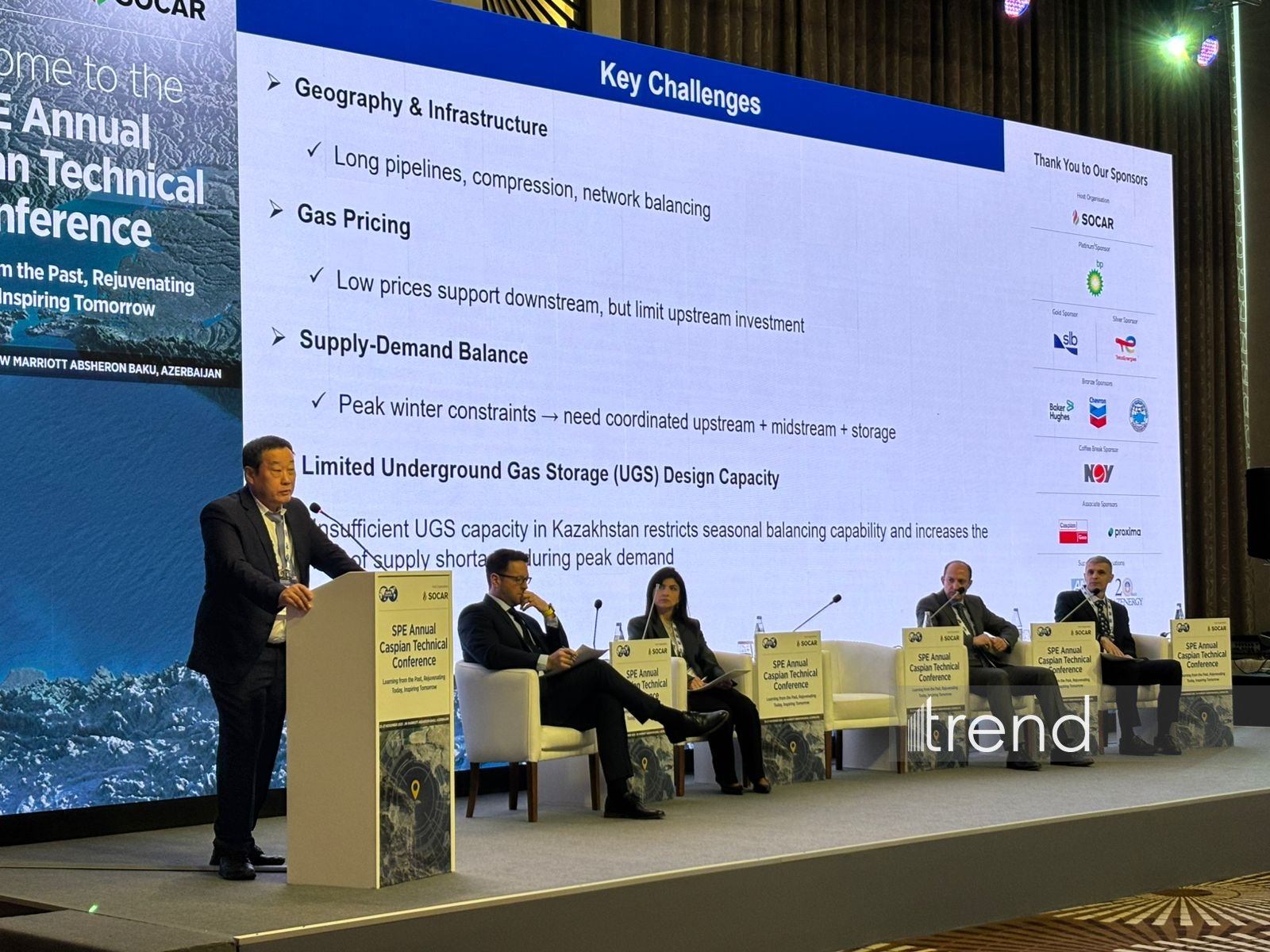BAKU, Azerbaijan, November 27. Kazakhstan produced approximately 59 bcm of gas in 2024 with plans to reach around 74 bcm by 2030, the Deputy Director General for Production at KMG-Karachaganak, Andrey Kan, said, Trend reports.
He made the announcement at the SPE 2025 Caspian Technical Conference in Baku.
"Kazakhstan possesses substantial natural gas reserves, estimated at approximately 3.8 trillion cubic meters, with 19 percent concentrated in key fields. The largest oil and gas condensate fields are situated in western Kazakhstan, particularly in the Tengiz, Kashagan, and Karachaganak regions. These fields are integral to the country’s resource base, with their vast reserves of oil and gas condensates forming the backbone of Kazakhstan's energy sector.
“These three fields are of global significance, not only due to their scale but also because of the technological challenges involved in their development. They contain complex components such as hydrogen sulfide (H₂S), carbon dioxide (CO₂), high pressures, and multiphase systems, which require advanced technologies, intricate inventory management, and substantial long-term capital investments,” Kan explained.
In 2024, Kazakhstan's gas production reached approximately 59 billion cubic meters (bcm).
"By 2030, the country aims to increase its gas production to around 74 bcm. While this is a significant target, it's essential to note that nearly 50 percent of the gas produced is reinjected into reservoirs to maintain pressure and enhance oil recovery. Achieving the 74 bcm goal will require the development of new fields, the expansion of processing capacities, and the optimization of gas recovery techniques," he added.
Kan emphasized that geography is a critical aspect of Kazakhstan's gas sector.
“The largest gas assets are located in the western part of the country, while the main consumer centers, including Almaty, Shymkent, and large industrial areas, are located up to 2,000 kilometers away. This creates serious physical, economic, and operational challenges,” he added.







